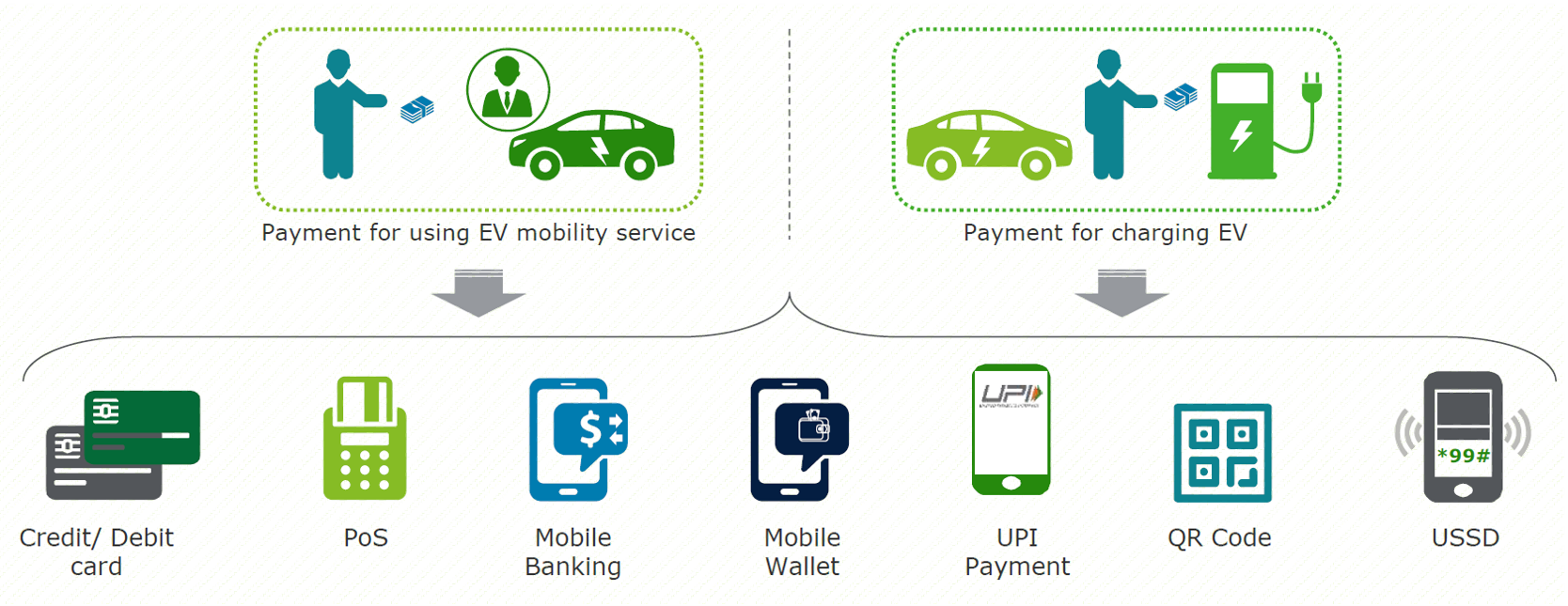Mobility is the segment where actual increase of EVs on the road will take place. Your business in mobility will focus on business models that use Electric Vehicles to provide services to the customers. You can build your business around the fact that customers are rather interested in services that provide an alternative for owning a vehicle but at the same time have all the facilities/ luxury of vehicle ownership.

Different type of business models under the electric vehicle category are:
Micro-mobility is used for providing travelling services for short distances to one or two passengers at a time. It will enable passengers to usually cover the first or last mile of a journey. Electric bicycles and electric scooters are among the most popular choices in micro-mobility as they are easy to use and act as an alternative to public transport. Bike-sharing is one of the most prominent business models across the world. Another model that is used is pick-up and drop-off at select locations. Some of the emerging micro-mobility companies in India are:

In a country like ours, where traffic density is very high, electric vehicle-enabled micro-mobility is a promising business model as it will save substantial commuting time.
You might have heard of AirBnB; the ride-hailing business model works similar to AirBnB’s model of creating a two-sided market that connects the end-user with the service provider over a technology-enabled platform. It will enable a customer to book a cab at his / her own convenience and provide a source of earning to drivers of private 4Ws. For building this business model, you need to rely heavily on smartphone apps to enable the connection between customer and driver. You will essentially work as Transportation Network Companies (TNCs) and function as a digital marketplace linking self-employed drivers with customers while collecting a fee for making the connection. Key examples of the same are Ola, Smart E, Blu SMart



You can offer your customers with an experience of a private vehicle and at the same time save them from paying the heavy upfront cost for owning the vehicle. You are offering customers a wide range of vehicle options suitable to their requirement with the flexibility of selecting desired period. Many OEMs such as Volvo, Porsche and BMW72, and other independent platform providers are introducing new subscription schemes to attract and encourage the customers to experience the personal mobility under car subscription. Some of the businesses operating in car subscription are:

E-roaming platform facilitates connect among several charging-station operators. It also facilitates reciprocal billing. If you are a customer of one of the linked companies, you can charge your electric vehicles at points operated by many other companies as well. It requires standard protocols and interfaces.
E-roaming enables charging stations to enjoy improved capacity utilization and profitability as the charging stations are available to both their own customers as well as to those of other providers. Various mobility services and providers – such as car sharing, bike sharing, public transportation, and parking-facility management – can also be connected using the eRoaming platform.
While the companies such as e-clearing.net, hubject, grieve, etc. are working in this space, there is no major player in India here. Thus, this might be an area of opportunity for you!
This business model enables you to provide a platform to private non-commercial vehicle owners to pool their ride with travellers having their destinations in the same route. Some of the global companies in ride sharing business are: BlaBlaCar, sRide,

Car sharing concept works similar to bike-sharing, but it is preferred for longer distances. It is a short-term car rental, hired on either hourly basis or per km basis or hybrid of both. Car sharing can be a round-trip(your customer is required to return the vehicles to their original pick-up stations after use), one-way(your customer can pick-up and park the vehicle at any authorized parking spot), free-floating (your customer locates the nearest available car using the mobile app, uses it, and then drop-off it at any location) or station-based (your customer could pick up and return the vehicle at designated rental stations only).
3 types of business models can be used for car sharing:
Business to consumer (B2C): You can offer individual consumers access to a fleet of vehicles through memberships, subscriptions, user fees, or a combination of pricing models. Example of B2C: E-Savari Rentals
Business to business (B2B): If you opt for this business model, you will offer access to a fleet to employees of a company with which you have entered into a contract for a fixed period of time. Example of B2B: Lithium Urban
Peer-to-peer (P2P):Here you provide a platform to people who can rent out their private car when they are not using it and thus lead to an additional revenue stream for vehicle owners. Example of P2P: Drivezy

For decades cash has been the traditional mode of payment but India is increasingly moving towards digital mode of payments. Mobility service providers in general, are tying up with payment gateways to offer hassle-free cashless services. Mobility service providers such as OLA have their own mobile wallet – OLA Money.
For electric vehicles, the payment services will be used predominantly for two purposes: for utilizing electric vehicle mobility service from an operator and for charging electric vehicles. You can act as the payment service provider.
Potential payment methods used in the two purposes are